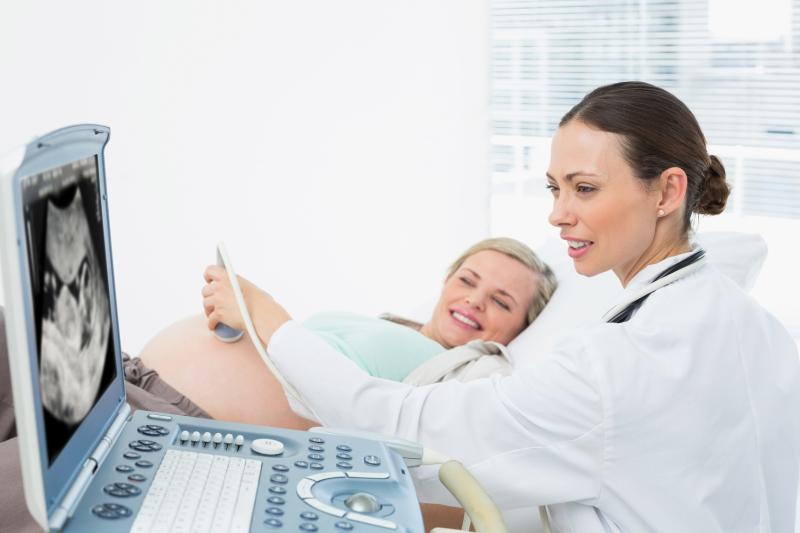
Several predictors have been identified for pregnancy loss, which can be used by physicians for patient counseling and in deciding upon the frequency of follow-up sonograms, reports a study, stressing that the identified cut-points should not be used to diagnose nonviability.
Of the 617 participating women, 64 (10.4 percent) had a clinical pregnancy loss after their first ultrasound, seven (1.1 percent) were lost to follow-up, and 546 (88.5 percent) had a live birth.
Low foetal heart rate and small crown-rump length (≤122, 123, and 158 bpm; ≤6.0, 8.5, and 10.9 mm for gestational weeks 6, 7, and 8, respectively) were independently associated with clinical pregnancy loss. Pregnancies with both characteristics were at greatest risk (relative risk, 2.08, 95 percent confidence interval [CI], 1.24–2.91). The combination of low foetal heart rate and small crown–rump length resulted in a 16-percent (95 percent CI, 9.1–23) adjusted absolute increase in risk of subsequent loss, from 5.0 percent (95 percent CI, 1.5–8.5) to 21 percent (95 percent CI, 15–27).
Moreover, abnormal yolk sac diameter or the presence of a subchorionic haemorrhage did not improve prediction of clinical pregnancy loss.
This study was a secondary analysis of pregnant women enrolled in the Effects of Aspirin in Gestation and Reproduction trial. Participants had one to two previous pregnancy losses and no documented infertility. Each pregnancy had a single ultrasound with a detectable foetal heartbeat between 6 weeks 0 days and 8 weeks 6 days.
The investigators separately defined the cut-points for low foetal heart rate and small crown–rump length for gestational weeks 6, 7, and 8 to improve prediction. They used identity and log-binomial regression models to assess the absolute and relative risks, respectively, and 95 percent CIs between jointly categorized low foetal heart rate, small crown–rump length, and clinical pregnancy loss. Adjusted models accounted for gestational age at ultrasound in weeks. Finally, multiple imputation was used to address the missing data.